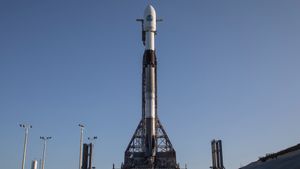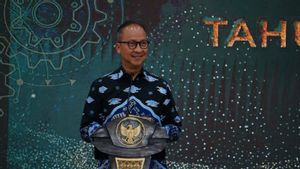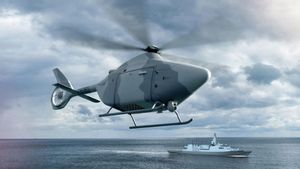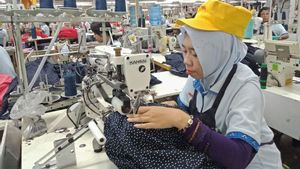JAKARTA - Now bringing a doctor to the International Space Station (ISS) has become easier, thanks to Holoportation technology that can create two-way communication in very far away places.
It was Dr Josef Schmid and his crew who were brought to the ISS using a Microsoft Hololens Kinect camera and a personal computer with custom Aexa software.
There, Schmid had a virtual conversation and handshake with European Space Agency (ESA) astronaut Thomas Pesquet as part of a 3D telemedicine visit. This is the first Holoportation handshake from Earth to space.
“This is an entirely new way of human communication across great distances. Moreover, it is a new way of human exploration, in which our human entities can travel out of this planet. Our physical bodies are not there, but our human entities are absolutely there," said Schimd.
Launching the official NASA website, Wednesday, April 20, Holoportation is a type of technology that allows users to interact, see and hear with remote participants in 3D, as if they were physically in the same space. That's combined with mixed reality displays like HoloLens.
Holoportation itself has been in use since at least 2016 by Microsoft, but this is the first use in extreme and remote environments such as outer space.
Schmid added that it doesn't matter that the ISS is moving at 17,500 mph and in constant motion in an orbit 250 miles above Earth, astronauts can return three minutes or three weeks later and with the system running.
In the future, NASA plans to use Holoportation as a form of two-way communication, in which people on Earth are holoported into space and astronauts are placed back on Earth. It can even be useful in future missions such as Planet Mars.
"We will use this for our private medical conferences, private psychiatric conferences, private family conferences, and to bring VIPs to the space station to visit astronauts," said Schmid.
The next step after that is to combine Holoportation with augmented reality (AR), to actually activate Tele-mentoring.
VOIR éGALEMENT:
“Imagine you being able to take the best instructors or actual designers of very complex technology right beside you wherever you work on them,” says Schmid.
For information, Holoportation and tools like it could have major implications for the future of space travel. Along with plans for a mission to Mars, the obstacle that must be overcome is the communication delays that occur during the journey to and from Mars.
Delays of up to 20 minutes each way present unique challenges for communication whether via simple radio transmissions, video streams, or new methods such as Holoportation.
"Communication is critical, whether for medical reasons or mission support, or staying in touch with family members. Crews need to connect with Earth and mission control, wherever humans roam," said Schmid.
The English, Chinese, Japanese, Arabic, and French versions are automatically generated by the AI. So there may still be inaccuracies in translating, please always see Indonesian as our main language. (system supported by DigitalSiber.id)















